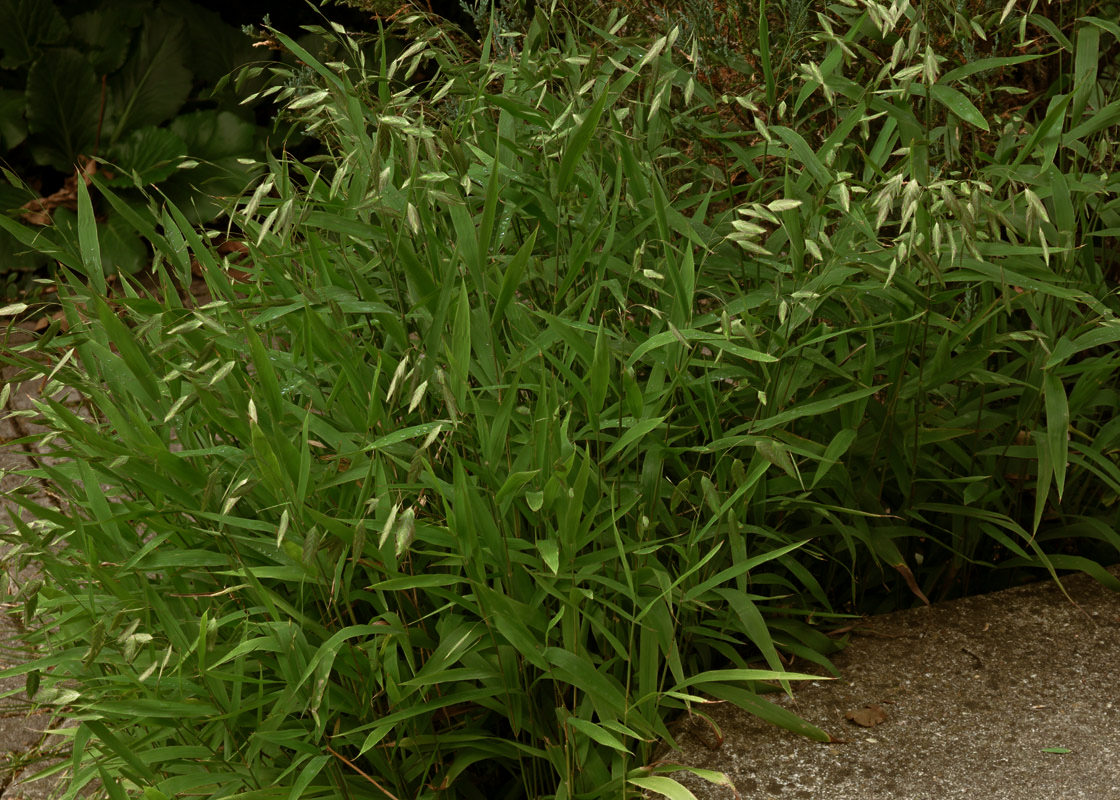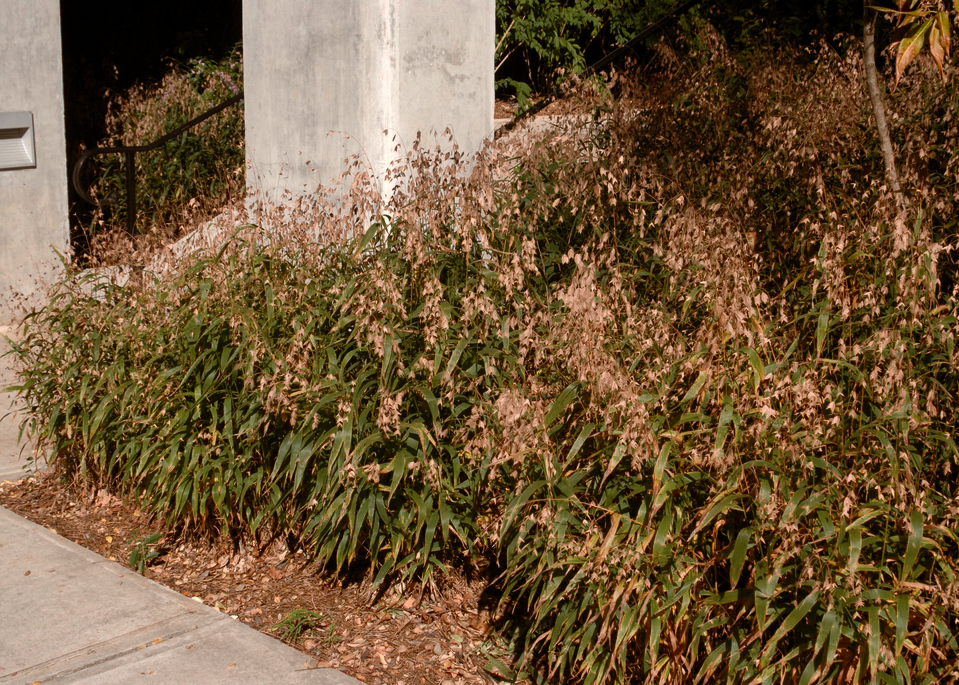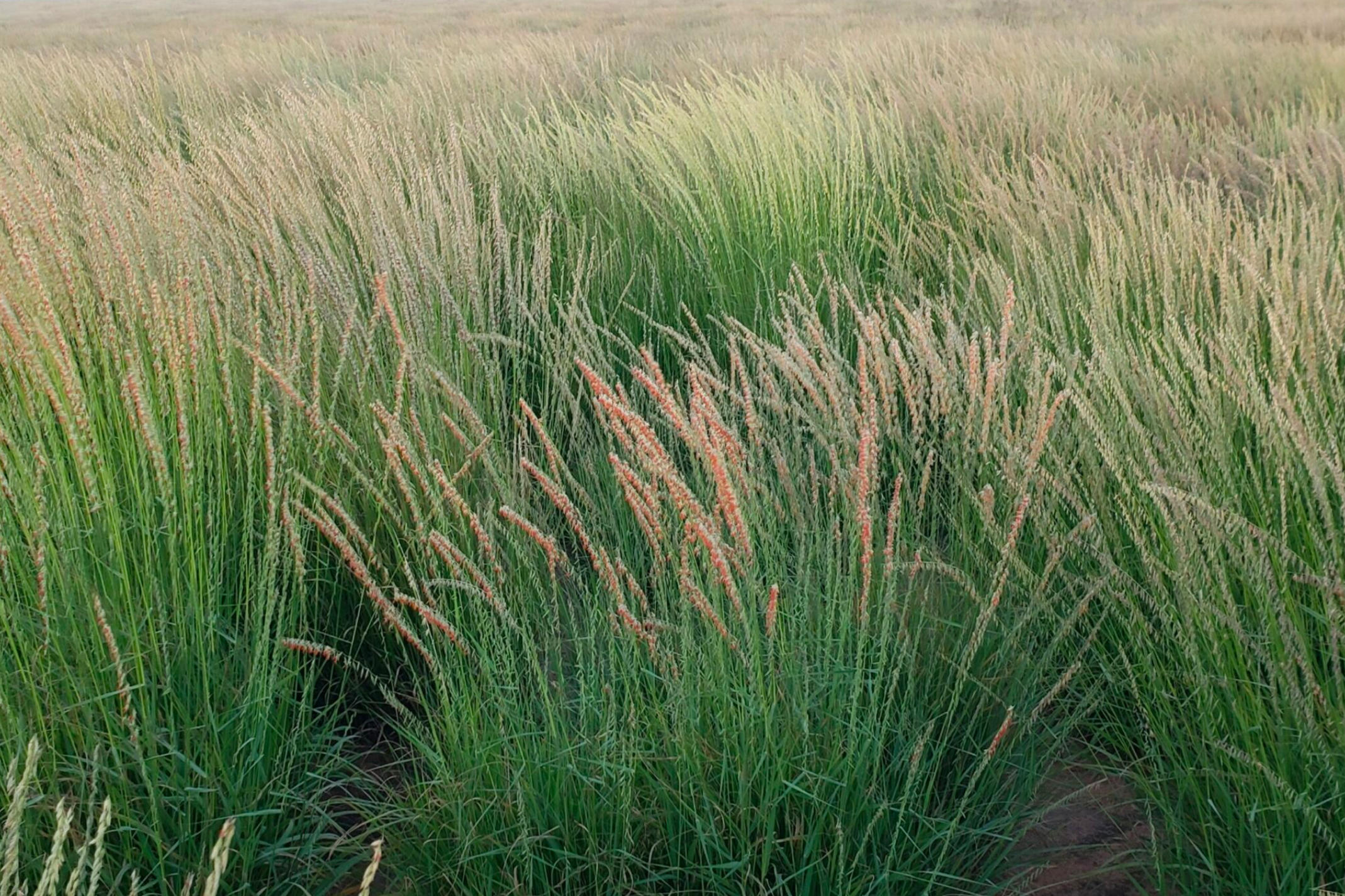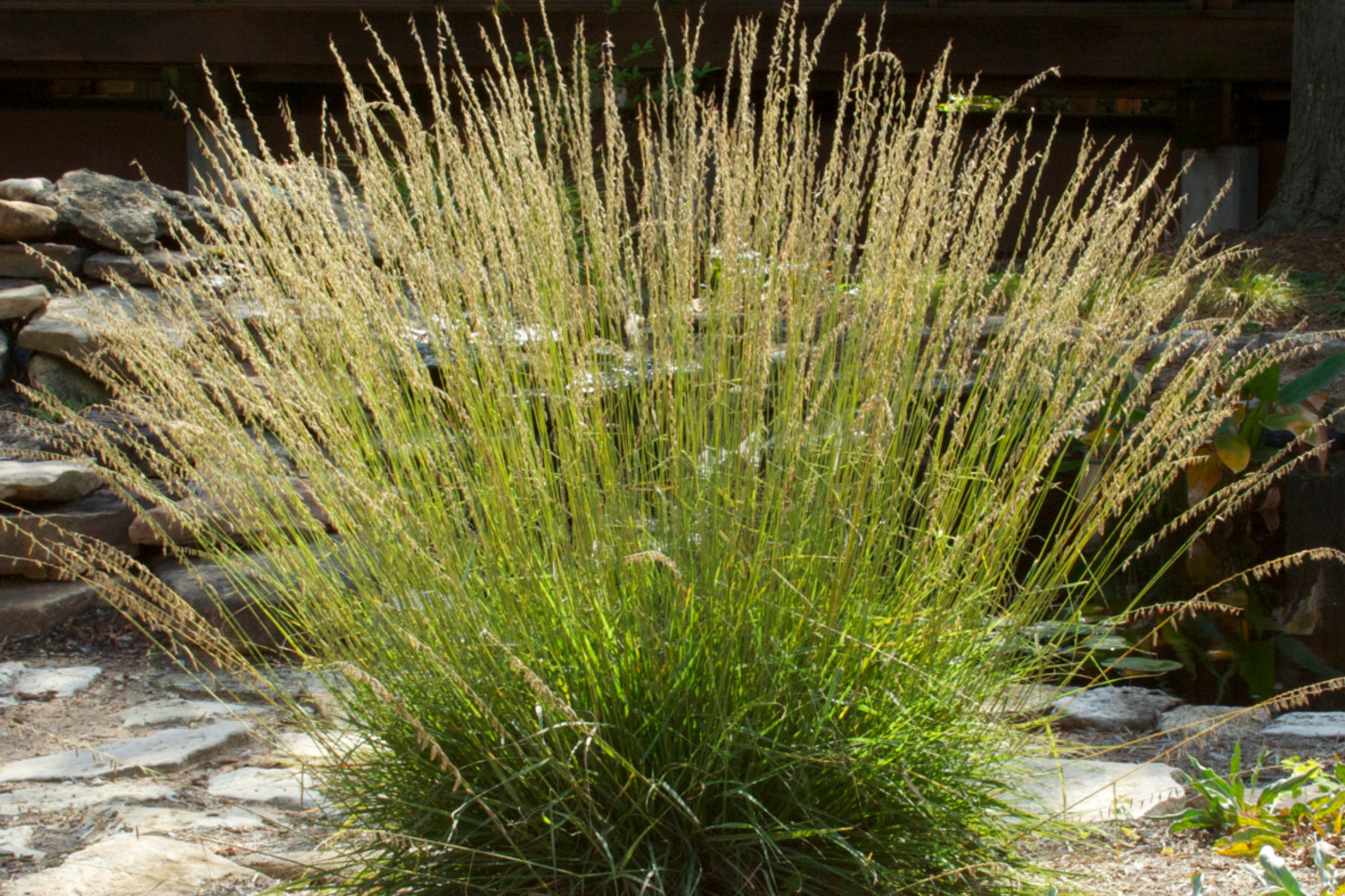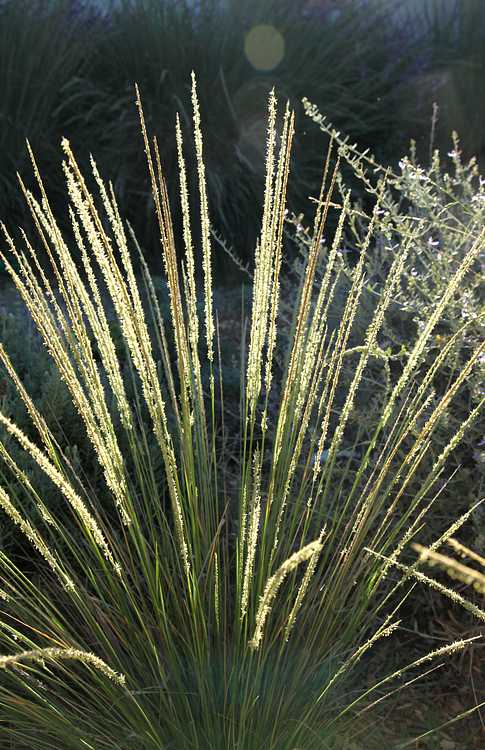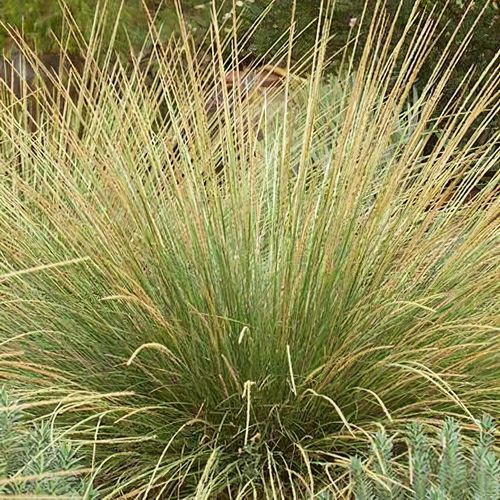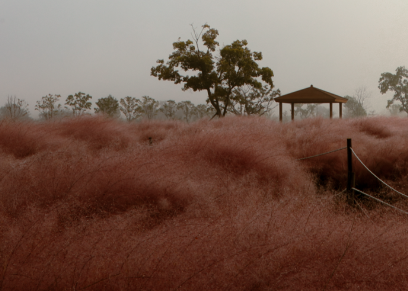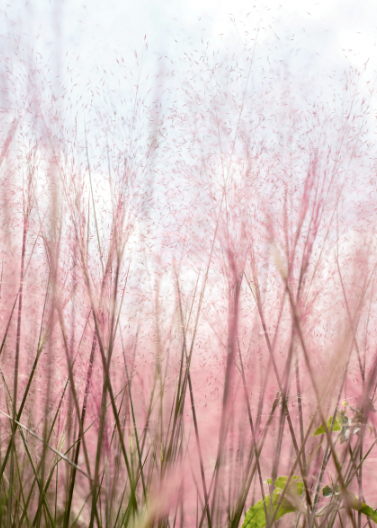Panicum virgatum 'Heavy Metal' is a popular switchgrass known for its striking, metallic blue foliage and upright habit. Airy, pink-tinted blooms appear in July, emphasizing the blue hue of its leaves. This blue switchgrass complements other grasses and perennials, looks impressive when planted in large groups, and serves as an attractive focal point when used as a single plant. As it is a cultivar of native Panicum virgatum, it is ideal for planting in meadows and naturalized areas, as it is not particular about soil and can withstand drought conditions. Panicum virgatum 'Heavy Metal' thrives in full sunlight and should not be over-fertilized. It is one of the oldest and most well-known blue cultivars of Panicum.
Switchgrass, also known as Panicum virgatum, is an ornamental grass native to Texas. It was once an essential part of the tallgrass prairie that covered a large portion of the state. This warm-season grass grows in clumps and typically stands at 3 feet. During the flowering season, the plant produces finely textured, pink-tinged, branched flower panicles that can bring the total plant height up to 6 feet. The medium green leaves turn yellow with orange tints in autumn and fade to tan-beige in winter. The panicles turn beige as the seeds mature in fall, and the seed plumes persist well into winter, providing food for birds.
Switchgrass can proliferate in medium to wet soils, in full sun to part shade. It can tolerate many soils, including dry ones, but prefers moist, sandy, or clay soils. Although it can take occasional flooding, it may flop in overly rich soils. The grass performs best in full sun and may lose its form in too much shade, rising more openly and possibly falling over. It grows primarily in clumps but will slowly spread by slightly creeping rhizomes. Clumps should be cut back to the ground in late winter to early spring. While plants may self-seed in optimum growing conditions, cultivars may not come true from seed.















